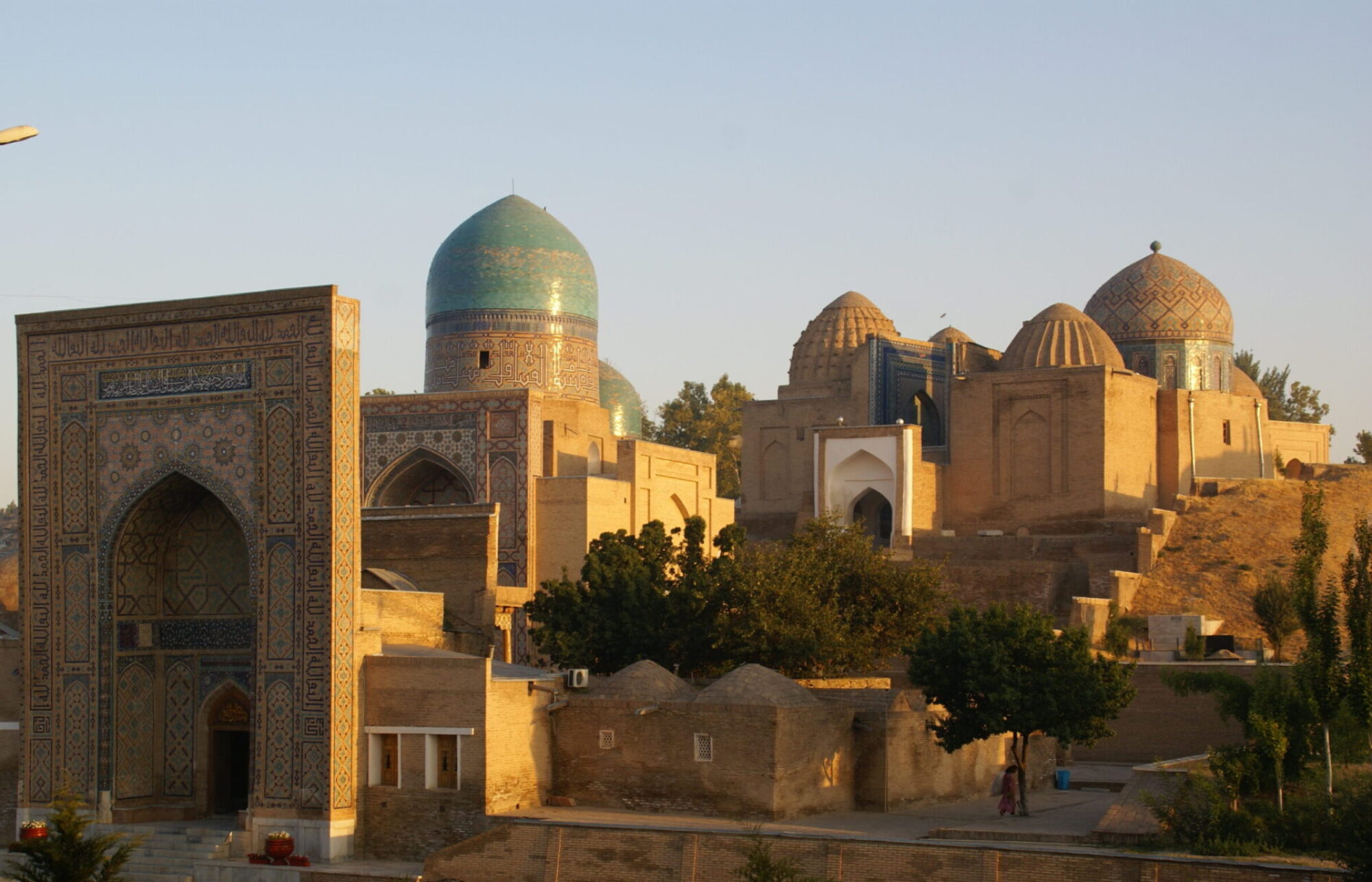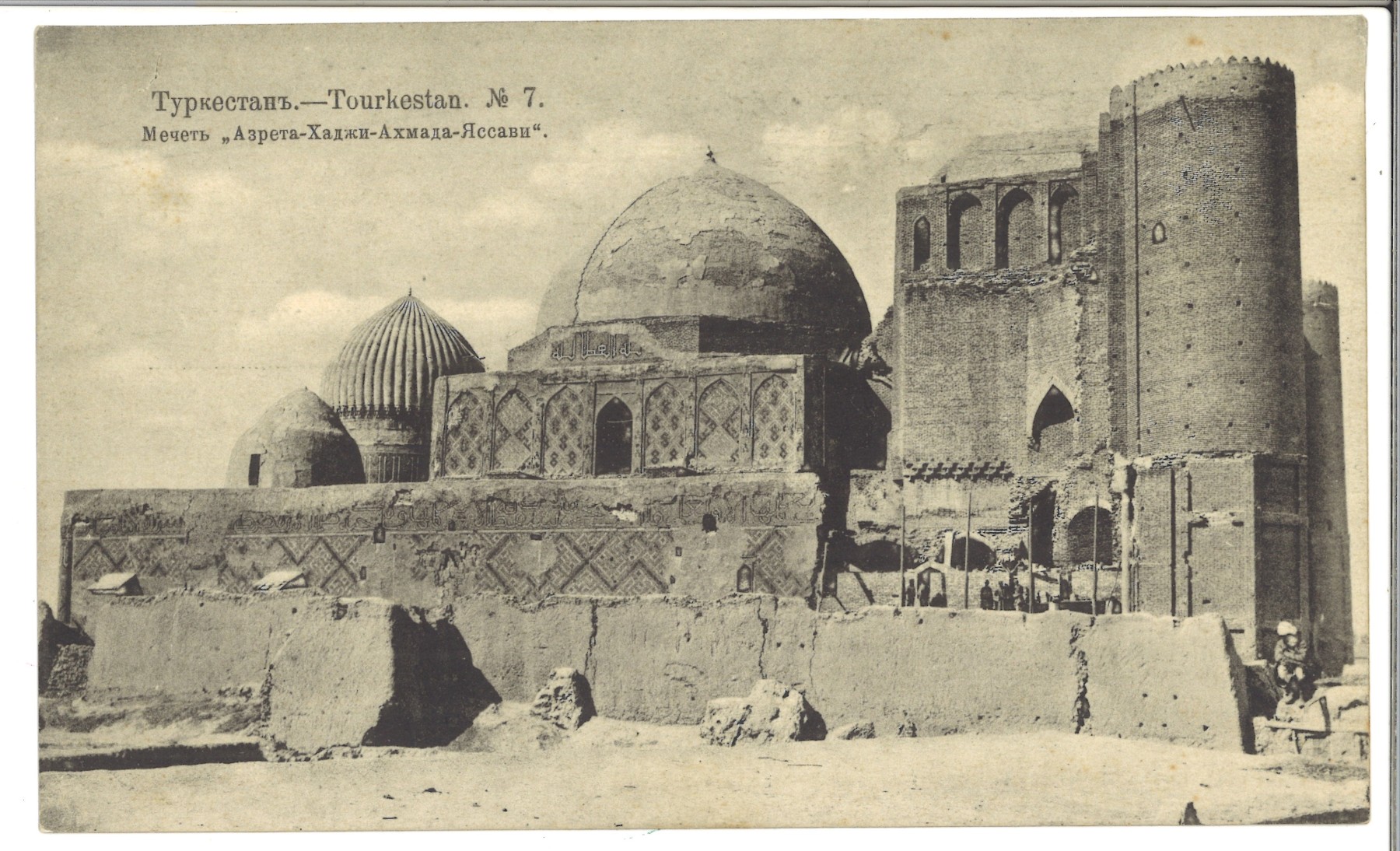The mausoleum of Khwaja Ahmad Yasawi was commissioned in the 14th century by Timur (ca. 1336-1405). It was constructed to commemorate the Sufi poet and Shaykh Ahmad Yasawi, who died in 1166. Yasawi is credited with the conversion of the Turkic people to Islam. The building stands within the remains of a citadel. The Timurid shrine comprises 8 main chambers, 27 smaller rooms and some 12 passages, all enclosed within a single building and spread over two floors. The complex includes a mosque, a tomb chamber, a sacred well, a refectory, meeting rooms, a library space and a kazanluk (large assembly hall).
The core of the building was constructed by 1394. During the second stage (1397-99), the upper parts of the mausoleum, including the tile revetments and the domes, were completed. Yet the gigantic portal that dominates the front (south) elevation of the shrine was never finished. The Shaybanid ruler ‘Abdallah Khan made significant additions to the mausoleum in 1591 but the bulk of it remained without any ceramic or other decorative features. The massive walls of exposed baked brick can be still seen today.
However, the dating of the Yasawi shrine to 1394-1399 based only on historiographic and epigraphic evidence is rather problematic. The variety and complexity of the vaulting (transverse arches, recumbent arches, as well as tunnel vaults), the sparse interior decoration (plaster muqarnas painted with geometrical designs, limited use of mosaic faience only in de borders of the dado, graphic linear decoration in cobalt blue, etc.) are completely different from other Timurid constructions built in the second half of the 14th century such as the mausoleums of Shah-i Zinda in Samarqand. The latter have simple single-chamber square plans and their facades are covered with lavish revetments in tile mosaic. It is more plausible to attribute the completion of the Yasawi shrine to the 1430s and not to the end of the 14th century.
Parts of the mausoleum’s external walls were severely damaged during the bombardment of Russian Tsarist troops in 1864 when the terrified population sheltering inside the shrine surrendered and the region came under Russian rule. Subsequently, the shrine was used for many years as a military depot. During this period, the Russian Army also virtually destroyed the adjacent mausoleum of Rabiʿe Sultan Begum (the daughter of Ulugh Beg), and reused the bricks for military purposes.
In 1884 Russian engineers started to survey the damage to the building. These efforts continued irregularly until 1930 but without any serious interventions. Between 1951 and 1989 the shrine was studied by Soviet archaeologists and architectural historians, the most prominent of them being Liia Iu. Man’kovskaia, who wrote her dissertation on the Yasawi complex in 1963. The monument was stabilized, original tile revetments were restored and the excavations revealed that it was built above an earlier Qarakhanid mausoleum from the 12th century. The most recent restoration effort was financed by the Turkish government and was carried out between 1992 and 2000, when a joint team of Kazakh and Turkish experts completed the restoration. The project attracted considerable public attention and the Yasawi shrine was listed as a UNESCO World Heritage Site in 2003.


